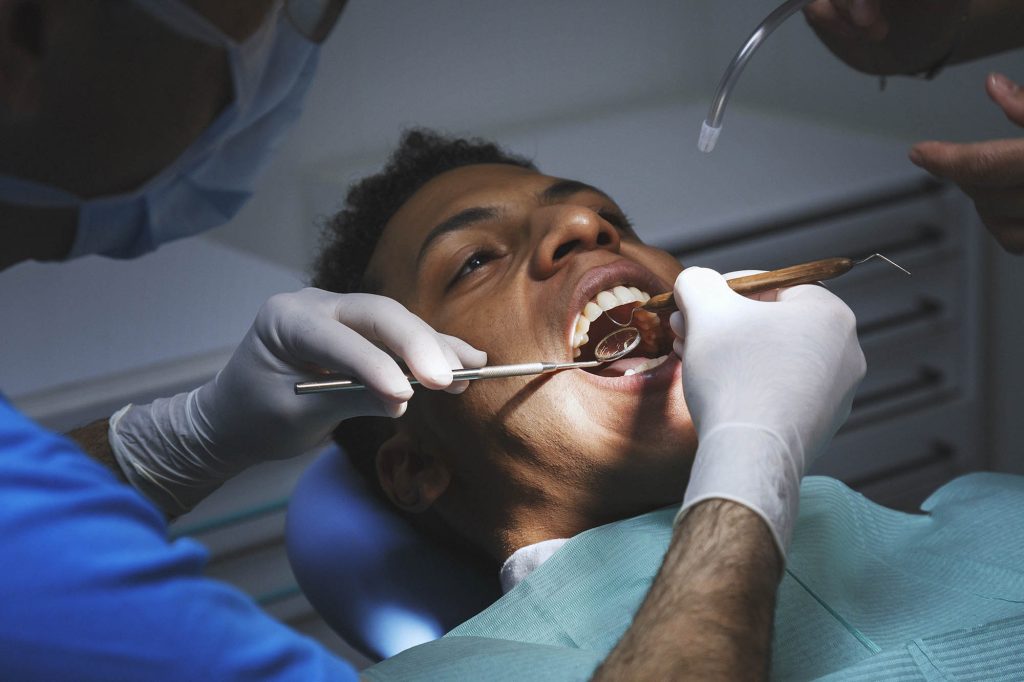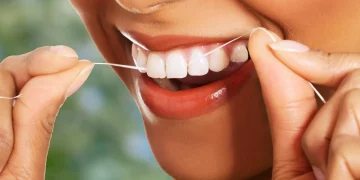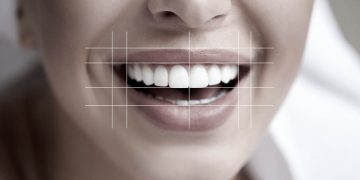Introduction
When was the last time you visited your dentist? Many people only make an appointment when they experience pain or discomfort, but regular dental checkups are essential for maintaining long-term oral health. While brushing, flossing, and using mouthwash are important daily practices, they are not enough to catch every potential issue. Regular dental checkups can detect problems early before they become serious, potentially saving you time, money, and discomfort in the future.
In this article, we’ll discuss the various oral health issues that routine dental visits can help identify, and why these checkups are critical in preventing more severe dental problems down the road.
1. Cavities (Tooth Decay)
What Are Cavities?
Cavities, also known as tooth decay or caries, are one of the most common dental issues people face. They occur when plaque on the teeth produces acids that break down tooth enamel, creating holes or “cavities.” If left untreated, cavities can cause severe pain, infection, and even tooth loss.
How Are Cavities Detected?
While you may not feel a cavity in its early stages, your dentist will be able to detect them using X-rays or by physically examining your teeth. Regular checkups give your dentist the opportunity to spot cavities early and fill them before they expand and cause greater damage. Early intervention is key to preventing more invasive treatments, like root canals.
2. Gum Disease (Gingivitis and Periodontitis)
What Is Gum Disease?
Gum disease starts as gingivitis, which is an inflammation of the gums caused by plaque buildup. If untreated, it can progress to periodontitis, a more serious form of gum disease that can lead to tooth loss. Gum disease is often painless in its early stages, making it difficult to detect without a professional exam.
How Is Gum Disease Detected?
During a dental checkup, your dentist or hygienist will check for signs of gum disease by measuring the depth of the pockets between your gums and teeth. Healthy gums have shallow pockets, but if the pockets are deep, it may indicate gum disease. Symptoms of gum disease include swollen, bleeding gums and bad breath, but these signs often occur only after the disease has progressed.
If caught early, gum disease can often be reversed with good oral hygiene and professional cleanings. However, if left untreated, periodontitis can lead to tooth loss and other serious health issues.
3. Oral Cancer
What Is Oral Cancer?
Oral cancer can develop in the mouth, lips, gums, tongue, and throat. It is often painless in the early stages, and the symptoms can be easy to overlook. However, if detected early, oral cancer has a much higher survival rate.
How Is Oral Cancer Detected?
During a routine checkup, your dentist will perform an oral cancer screening. This includes checking for lumps, abnormal tissue growth, and other signs of cancer in the mouth and throat. Dentists are trained to spot early signs of oral cancer that you may not notice yourself. If detected early, oral cancer can often be treated successfully, making regular dental visits an essential part of your health regimen.
4. Tooth Sensitivity
What Causes Tooth Sensitivity?
Tooth sensitivity occurs when the enamel on your teeth wears down, or when gum recession exposes the sensitive root of your tooth. This can lead to discomfort when consuming hot, cold, or sweet foods and beverages. While sensitivity can be a temporary issue, it may also signal underlying problems like gum disease or cavities.
How Is Tooth Sensitivity Detected?
Your dentist will examine your teeth and gums to determine the cause of your sensitivity. They may also take X-rays to check for cavities or other underlying issues. Based on the diagnosis, your dentist may recommend fluoride treatments, desensitizing toothpaste, or other solutions to alleviate discomfort and prevent further damage.
5. Plaque and Tartar Buildup
What Is Plaque and Tartar?
Plaque is a sticky film of bacteria that forms on your teeth after eating or drinking. If not removed by brushing and flossing, plaque hardens into tartar (also known as dental calculus), which can only be removed by a dentist or hygienist. Plaque and tartar buildup can lead to cavities, gum disease, and bad breath.
How Is Plaque and Tartar Detected?
During a dental checkup, your dentist or hygienist will examine your teeth for plaque and tartar buildup. They will use special tools to remove tartar and ensure that your teeth are thoroughly cleaned. Regular checkups are essential for removing tartar before it causes gum irritation or cavities.
6. Malocclusion (Misaligned Teeth)
What Is Malocclusion?
Malocclusion refers to misalignment of the teeth and jaw. It can cause a variety of issues, including difficulty chewing, jaw pain, and uneven wear on your teeth. In more severe cases, malocclusion can lead to problems with speech and breathing.
How Is Malocclusion Detected?
Your dentist will examine your bite and may take X-rays to assess the alignment of your teeth and jaw. If malocclusion is identified, your dentist may recommend orthodontic treatment, such as braces or clear aligners, to correct the issue. Early detection can help avoid complications later in life and can prevent unnecessary pain or damage to your teeth.
7. Tooth Grinding (Bruxism)
What Is Tooth Grinding?
Tooth grinding, or bruxism, is a condition where you unconsciously grind or clench your teeth, often during sleep. It can cause tooth wear, jaw pain, headaches, and even fractured teeth.
How Is Tooth Grinding Detected?
Your dentist may notice signs of bruxism, such as worn-down tooth surfaces or jaw tenderness, during a routine checkup. If bruxism is suspected, your dentist may recommend a nightguard or other solutions to protect your teeth and alleviate symptoms. Addressing tooth grinding early can prevent long-term damage to your teeth and jaw.

8. Cavities Between Teeth
What Are Interproximal Cavities?
Interproximal cavities are cavities that form between the teeth, areas that are often hard to clean with a toothbrush alone. These cavities are often not noticeable until they become large and cause pain.
How Are Cavities Between Teeth Detected?
Dentists can detect cavities between the teeth by taking X-rays or using special tools that can detect areas of decay that are invisible to the naked eye. Early detection of interproximal cavities allows for prompt treatment, preventing the decay from spreading further.
9. Bad Breath (Halitosis)
What Causes Bad Breath?
Bad breath, or halitosis, is commonly caused by bacteria that accumulate on the tongue, gums, and teeth. It can also be a sign of gum disease, tooth decay, or other oral health issues.
How Is Bad Breath Detected?
If you notice persistent bad breath, it’s essential to visit your dentist. During a checkup, your dentist will assess the cause of your halitosis and may recommend a treatment plan based on the underlying issue. Whether it’s gum disease, cavities, or dry mouth, your dentist can help identify the root cause of the problem and address it accordingly.
10. Dry Mouth (Xerostomia)
What Is Dry Mouth?
Dry mouth, or xerostomia, occurs when your salivary glands do not produce enough saliva. This can lead to difficulty swallowing, increased plaque buildup, and a higher risk of cavities and gum disease.
How Is Dry Mouth Detected?
During a routine dental exam, your dentist will evaluate the condition of your mouth and may ask about your symptoms. If you’re experiencing dry mouth, your dentist can offer solutions, such as using saliva substitutes, recommending specific products, or identifying medications that may be contributing to the condition.
Conclusion
Regular dental checkups are essential for maintaining optimal oral health and detecting potential problems before they become serious. From cavities and gum disease to oral cancer and tooth sensitivity, routine visits allow your dentist to spot issues early and implement preventive treatments. By staying proactive with your dental care, you can ensure that your teeth and gums stay healthy, saving you time, money, and discomfort in the long run.
Make it a point to schedule regular dental checkups, typically every six months, to keep your smile bright and your oral health in top condition. Remember, an ounce of prevention is worth a pound of cure!













































Discussion about this post